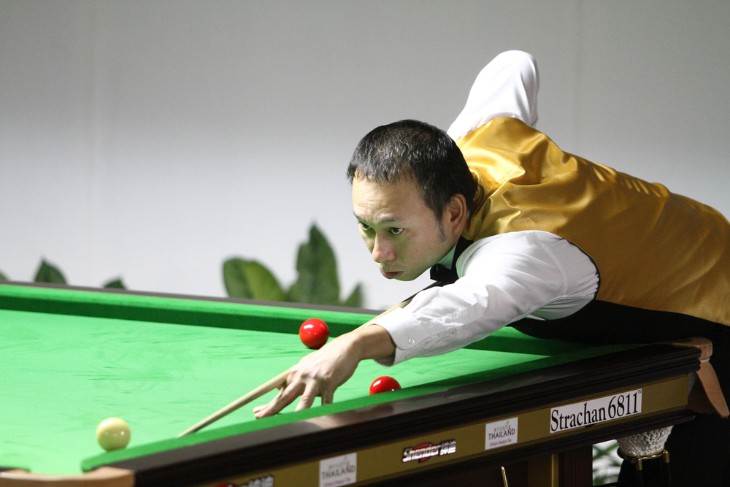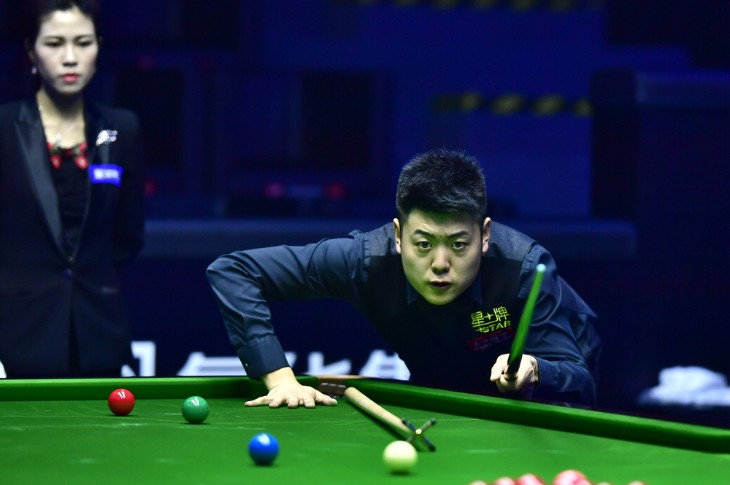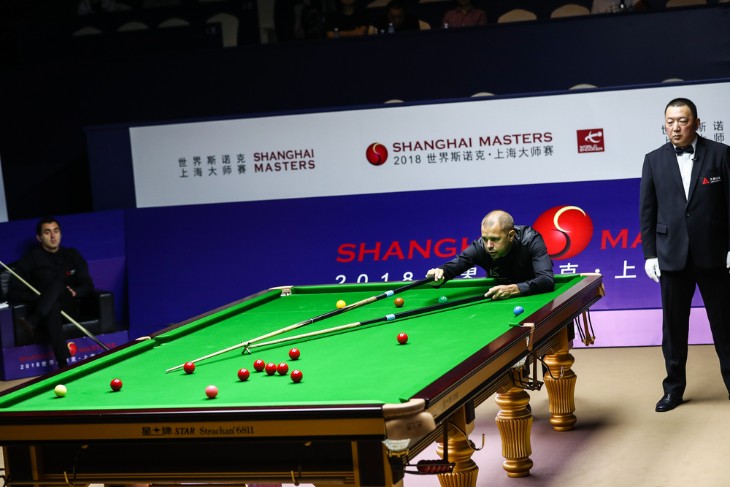- Key Strategies for Accurate Frame Score Predictions
- Role of Player Psychology in Frame Scoring
- Technology and Data Analytics in Snooker Betting
- Impact of External Factors on Snooker Matches
- Case Studies: Notable Frame Score Predictions in Major Tournaments
- Expert vs. Algorithm: Comparing Prediction Methods
- Preparing for Future Trends in Snooker Betting
- Conclusion
Frame score betting in snooker refers to the practice of predicting the exact scoreline of a snooker match in terms of frames won by each player. This form of betting requires an in-depth understanding of the game, the players, and various statistical elements. Snooker, a cue sport, is typically played in a 'best of' frames format, with each frame representing a mini-match. The winner is the player who wins the majority of these frames. The key to successful frame score betting lies in accurately predicting the final tally of frames won by each competitor.
In frame score betting, unlike simple win/lose bets, the bettor must consider a wider range of factors. This includes player form, head-to-head records, playing styles, and even the length of the match. Longer matches in major tournaments, for instance, can be unpredictable and offer more opportunities for comebacks, making the betting more challenging. Bettors often rely on historical data and player statistics to make informed predictions. Understanding these fundamentals is crucial for anyone interested in frame score betting in snooker.
A historical analysis of frame score outcomes is an essential tool for bettors. By examining past matches, particularly in major tournaments like the World Snooker Championship, bettors can identify patterns and trends that may influence future matches. This analysis involves looking at various aspects, such as the frequency of certain scorelines, the performance of players under different conditions, and the impact of match venues.
For example, certain players may demonstrate a pattern of performing exceptionally well in the initial frames but struggle to maintain this momentum throughout the match. Others might show a consistent pattern of comebacks in longer formats. Additionally, some players might have a strong record in specific venues or against certain opponents. This historical data provides a foundation upon which bettors can base their predictions. It's not just about the numbers; understanding the context behind these outcomes is equally important. This approach allows bettors to make more nuanced and informed predictions, increasing their chances of success in frame score betting.
Key Strategies for Accurate Frame Score Predictions
Successful frame score predictions in snooker betting involve a blend of analytical skills and an understanding of the game's nuances. Bettors must delve into a variety of strategies to enhance their accuracy. Firstly, analysing player form is critical. This includes recent performance, consistency in playing style, and adaptability to different opponents and conditions. Secondly, understanding the dynamics of specific tournaments is vital. Each tournament has its own character, influenced by factors like format, venue, and historical significance, which can affect player performance.
To simplify, consider these key points:
- Player Form: Evaluate recent performances, consistency, and response to high-pressure situations.
- Tournament Dynamics: Each tournament's format and historical context can influence outcomes.
- Head-to-Head Records: Analyse past encounters between the players to gauge possible outcomes.
- Playing Conditions: Consider the venue, table conditions, and even weather factors that might impact play.

Role of Player Psychology in Frame Scoring
The psychology of a snooker player plays a significant role in their performance, particularly in frame score outcomes. The mental aspect of snooker is as crucial as physical skill. Players must maintain focus, handle pressure, and display resilience, especially in long matches where mental fatigue can set in. For instance, a player trailing in the early frames must have the psychological strength to mount a comeback. Similarly, players leading the match need to maintain concentration to avoid complacency, which can lead to unexpected turnarounds.
Understanding a player's mental fortitude is key for bettors. This involves analysing how players have reacted to different situations in the past, such as their performance under pressure or their ability to recover from a poor start. Psychological factors can often outweigh technical skills in snooker, making this a critical area for anyone looking to predict frame scores accurately. Bettors who can effectively gauge a player's mental strength and stability stand a better chance of making successful predictions.
Technology and Data Analytics in Snooker Betting
The integration of technology and data analytics has revolutionised the way frame score predictions are made in snooker betting. Modern technology enables the collection of vast amounts of data, which, when analysed, can provide deep insights into player performance and match outcomes. For example, advanced software can track and analyse every shot in a match, providing statistics on shot success rates, safety play effectiveness, and break-building skills.
Key aspects where technology and data analytics play a role include:
- Data Collection: Using technology to gather detailed performance data on players.
- Performance Analysis: Analysing data to understand player strengths, weaknesses, and tendencies.
- Predictive Modelling: Employing statistical models and machine learning algorithms to predict match outcomes based on historical and current data.
- Real-Time Analysis: Providing bettors with up-to-date information during matches, which can be crucial for in-play betting.
These technological advancements not only enhance the accuracy of predictions but also enrich the betting experience by providing more depth and insight into the game. Bettors who leverage these tools effectively can gain a significant edge in frame score betting.
Impact of External Factors on Snooker Matches
External factors can significantly impact frame score outcomes in snooker matches. These factors range from the physical conditions of the playing environment to psychological and external pressures that can influence a player's performance. For instance, the condition of the snooker table, including aspects like the speed of the cloth and the responsiveness of the cushions, can affect how the game is played. A faster table might benefit players who are aggressive and have a strong break-building ability, while a slower table could advantage those with superior tactical skills.
Another key external factor is the audience and the venue. Playing in front of a home crowd can provide a psychological boost to some players, while others may find it adds extra pressure. Major tournaments often see varied audience dynamics, which can impact players differently. Additionally, the schedule and format of tournaments can affect players' physical and mental fatigue levels, influencing frame score outcomes. Bettors need to consider these external factors alongside player statistics and historical performance to make more informed predictions.
Case Studies: Notable Frame Score Predictions in Major Tournaments
Analysing case studies of notable frame score predictions in major snooker tournaments provides valuable insights into the complexities of betting in this sport. These case studies reveal how various factors combined to produce specific outcomes, offering lessons for future predictions.
Some key case studies include:
- The 2019 World Snooker Championship: Examining the unexpected frame score outcomes and the factors that led to them.
- Ronnie O'Sullivan's Performance Trends: Analysis of how O'Sullivan's playing style and psychology affected frame scores in key matches.
- Underdog Victories: Instances where lower-ranked players defeated favourites, and the factors that contributed to these outcomes.
- Impact of Rule Changes: How alterations in snooker rules over the years have influenced frame score betting and match outcomes.
These case studies illustrate the importance of considering a range of factors in frame score betting, from player form and psychology to external influences and rule changes. They provide practical examples of how complex and unpredictable snooker betting can be, underscoring the need for thorough research and analysis in making predictions.

Expert vs. Algorithm: Comparing Prediction Methods
The debate between relying on expert opinion versus algorithms for predicting frame scores in snooker is ongoing. Experts, often seasoned enthusiasts or former players, bring a deep understanding of the game, considering nuances that might elude an algorithm. They can assess factors like player psychology, in-game tactics, and even the influence of the crowd. Their predictions are based on years of experience and a profound knowledge of snooker's intricacies.
On the other hand, algorithms offer an objective approach to prediction. They analyse vast amounts of data, identifying patterns and trends that might not be apparent even to seasoned experts. Algorithms can process information about players, past performances, match conditions, and statistical probabilities to predict frame scores. However, they may not fully account for sudden changes in a player's form or unique in-match situations. Both methods have their strengths and weaknesses, and the most effective approach might involve a combination of expert insights and algorithmic analysis.
Preparing for Future Trends in Snooker Betting
As snooker continues to evolve, so do the trends in frame score betting. Anticipating and adapting to these trends is crucial for bettors. One emerging trend is the increasing use of advanced analytics and artificial intelligence in making predictions. These technologies are becoming more sophisticated, offering deeper insights and more accurate predictions based on a range of variables. Another trend is the growing popularity of in-play betting, where bets are placed during the match, requiring real-time data and quick decision-making.
Key future trends include:
- Advanced Analytics: Increased use of sophisticated data analysis tools for more accurate predictions.
- In-Play Betting: The rise of betting during matches, relying on live data and quick strategic decisions.
- Global Market Expansion: The growing interest in snooker betting in new markets around the world.
- Regulatory Changes: Potential changes in betting laws and regulations and their impact on the betting landscape.
Bettors who stay informed about these trends and adapt their strategies accordingly will be better positioned to succeed in the evolving world of snooker betting.
Conclusion
In conclusion, frame score betting in snooker is a complex and multifaceted activity that requires a deep understanding of various factors. From the fundamental principles of frame score betting and historical analysis to the impact of player psychology and technological advancements, each aspect plays a crucial role in making informed predictions. The comparison between expert opinions and algorithmic methods, along with ethical considerations, highlights the diverse nature of this field. Preparing for future trends is essential for staying ahead in the dynamic world of snooker betting.




.webp)


 (1).webp)




















